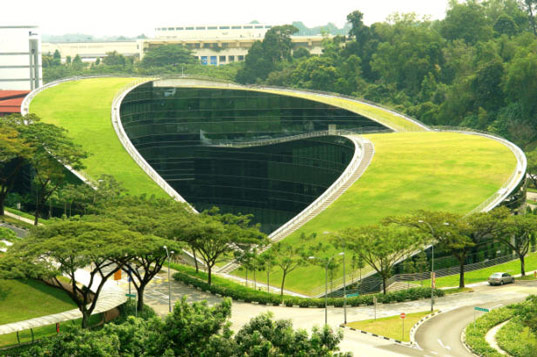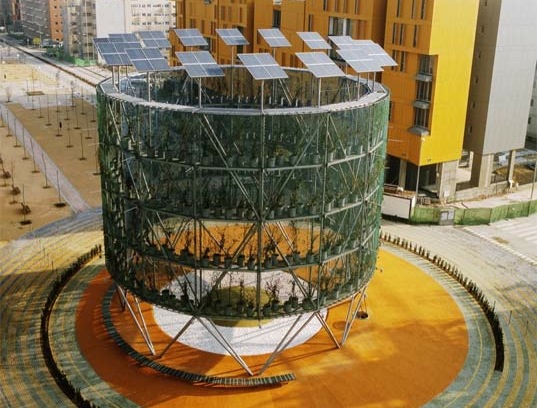Researchers from the Polytechnic University of Madrid (UPM) have built a roof covered with plants and a watering system that will optimise the consumption of a building’s heating and cooling systems thanks to its insulation. It is a third-generation ecological roof, characterized by its sustainability and the use of indigenous plant species.

In a perfect world, all roofs would look like this - and save energy too.
“The importance of the roofs”, explained Francisco Javier Neila, Professor at the UPM and co-author of the study, to SINC, “is that each geographical area requires the structures and plant species that work best”. In this case, the researchers divided the roof of an experimental building in Colmenar Viejo (Madrid) into 20 modules, and carried out a test with different supports and regional plants based on three factors: the plant growing at a good speed, the density of the biomass perfectly covering the roof and the result being visually attractive.
Indigenous species work best
In winter and summer conditions, the best performing roof has an 8 cm tank that collects rainwater and offers an even irrigation system.
Plants such as sedum (Sedum praealtum) or aptenia (Aptenia cordifolia) provide the best insulation “because they have a thick leaf and are resistant to frosts and heat”, indicated Neila. But each location where an ecological roof is installed will have its own catalogue of plants, starting with indigenous plants “because in its habitat, the plant performs better”.
The researchers also considered covering the roofs with an effective plant and decorating it with another prettier one to fulfil both requirements, but the result is difficult ,“since when a single space is shared by two species, the stronger one will predominate”, Neila explained.
There are a series of superimposed layers under the groundcover. The first is a very light special substrate which helps to drain rainwater quickly so the plant does not drown. Here, the best solution is pine bark crushed and mixed with sewage sludge.

Madrid loves green architecture
The substrate lies on porous concrete which acts as a sieve for excess water that will end up in the tank, the capacity of which is controlled by raised floor systems similar to those that support the raised floor of an office. The water contained rises up to the roof through capillary action and enables even irrigation. Just before the building’s floor framing, the roof consists of a waterproof sheet which prevents leaks.
Between each layer an extruded polystyrene sheet is inserted which, according to the roof model, can be situated under the porous concrete or beneath the tank. Each layer also includes a sensor that measures temperature and humidity variables which can be compared with data collected by an adjoining weather station for checking any change caused by the roof during the four seasons of the year.
The researchers have also left various modules without an ecological roof to clearly demonstrate its effectiveness. “Roof areas with plants optimise better the heating and cooling of a building than a normal structure, regardless of how well insulated it is”, the expert commented to SINC.
‘Rurban movement’
The design of ecological roofs responds to the challenge of merging urban and rural lifestyles and is being developed in countries such as Germany, Switzerland, the USA and South Africa. Ecological roofs reduce pollution in cities, absorb lead and other organic components. “A forest would be less contaminated with the same intensity of urban pollution", said Neila.
These roofs will help to reduce the temperature of cities, which today are a kind of urban heat island. Scientists have also estimated that acoustic contamination would be reduced to three decibels, thanks to plant absorption.
Groundcover is therefore becoming a new type of building material but development prospects are not positive due to its high price. Neila cites Germany, “where the situation is being resolved with tax benefits, council taxes, increase in suitability for building, which means it does not cost developers so much to invest in this option”.
Article: Francisco Javier Neila González, César Bedoya Frutos, Consuelo Acha Román. “Las cubiertas ecológicas de tercera generación: un nuevo material constructivo”. Informes de la Construcción 60 (511)15-24, 2008.






Comments